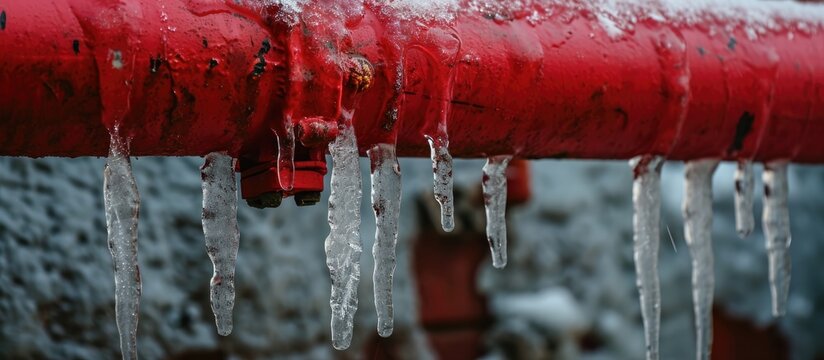Preventing Pipes from Cold Weather: Top Tips
Preventing Pipes from Cold Weather: Top Tips
Blog Article
We have unearthed the article involving How to prepare your home plumbing for winter weather down the page on the net and accepted it made good sense to relate it with you in this article.
:strip_icc()/snow-outdoor-faucet-pipes-4af65d1e5e904fb1aa7bf74071fe5d89.jpg)
Winter can wreak havoc on your pipes, especially by freezing pipelines. Right here's how to avoid it from happening and what to do if it does.
Intro
As temperature levels decline, the risk of icy pipelines increases, potentially bring about costly fixings and water damages. Understanding how to avoid icy pipes is crucial for house owners in cold environments.
Understanding Icy Pipelines
What causes pipes to freeze?
Pipelines freeze when subjected to temperature levels below 32 ° F (0 ° C) for prolonged durations. As water inside the pipelines freezes, it broadens, taxing the pipe walls and potentially creating them to rupture.
Threats and problems
Icy pipes can cause water disruptions, residential property damages, and costly repairs. Ruptured pipes can flood homes and cause comprehensive architectural damages.
Indicators of Frozen Pipes
Identifying icy pipes early can prevent them from breaking.
How to recognize icy pipelines
Seek lowered water circulation from taps, uncommon odors or sounds from pipelines, and visible frost on revealed pipelines.
Prevention Tips
Insulating at risk pipes
Cover pipelines in insulation sleeves or use heat tape to secure them from freezing temperature levels. Concentrate on pipes in unheated or exterior areas of the home.
Heating strategies
Keep interior rooms appropriately heated, especially locations with plumbing. Open up closet doors to allow cozy air to distribute around pipelines under sinks.
Shielding Outside Pipes
Garden tubes and outdoor faucets
Detach and drain pipes yard hose pipes prior to winter months. Mount frost-proof faucets or cover outside taps with protected caps.
What to Do If Your Pipelines Freeze
Immediate actions to take
If you believe frozen pipelines, maintain faucets available to alleviate pressure as the ice thaws. Utilize a hairdryer or towels soaked in hot water to thaw pipes slowly.
Long-Term Solutions
Structural changes
Take into consideration rerouting pipelines away from outside wall surfaces or unheated locations. Include extra insulation to attic rooms, cellars, and crawl spaces.
Upgrading insulation
Invest in high-grade insulation for pipelines, attics, and walls. Appropriate insulation assists preserve regular temperature levels and decreases the danger of icy pipelines.
Final thought
Stopping icy pipes needs aggressive steps and quick reactions. By comprehending the causes, indicators, and preventive measures, homeowners can secure their pipes during winter.
5 Ways to Prevent Frozen Pipes
Drain Outdoor Faucets and Disconnect Hoses
First, close the shut-off valve that controls the flow of water in the pipe to your outdoor faucet. Then, head outside to disconnect and drain your hose and open the outdoor faucet to allow the water to completely drain out of the line. Turn off the faucet when done. Finally, head back to the shut-off valve and drain the remaining water inside the pipe into a bucket or container. Additionally, if you have a home irrigation system, you should consider hiring an expert to clear the system of water each year.
Insulate Pipes
One of the best and most cost-effective methods for preventing frozen water pipes is to wrap your pipes with insulation. This is especially important for areas in your home that aren’t exposed to heat, such as an attic. We suggest using foam sleeves, which can typically be found at your local hardware store.
Keep Heat Running at 65
Your pipes are located inside your walls, and the temperature there is much colder than the rest of the house. To prevent your pipes from freezing, The Insurance Information Institute suggests that you keep your home heated to at least 65 degrees, even when traveling. You may want to invest in smart devices that can keep an eye on the temperature in your home while you’re away.
Leave Water Dripping
Moving water — even a small trickle — can prevent ice from forming inside your pipes. When freezing temps are imminent, start a drip of water from all faucets that serve exposed pipes. Leaving a few faucets running will also help relieve pressure inside the pipes and help prevent a rupture if the water inside freezes.
Open Cupboard Doors
Warm your kitchen and bathroom pipes by opening cupboards and vanities. You should also leave your interior doors ajar to help warm air circulate evenly throughout your home.

As a fervent reader about 6 Ways to Prevent Frozen Pipes, I figured sharing that piece of content was a great idea. Sharing is caring. Helping people is fun. Thanks for taking the time to read it.
Request Free Estimate Report this page